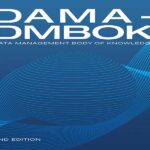- عنوان مجله: Designing Intelligent Construction Projects
- نویسنده: Michael Frahm
- حوزه: خانه هوشمند
- سال انتشار: 2022
- تعداد صفحه: 242
- زبان اصلی: انگلیسی
- نوع فایل: pdf
- حجم فایل: 13.4 مگابایت
چرا کتابی با تمرکز بر سایبرنتیک مدیریت، مدیریت ناب و دیجیتالی سازی؟ زیرا سایبرنتیک، به عنوان آمیزه ای از علوم طبیعی و علوم انسانی، درک جامع و جهانی از کنترل و تنظیم ماشین ها، موجودات زنده و سیستم های اجتماعی را آموزش می دهد. دقیقاً برای افرادی که جرات دارند خارج از چارچوب فکر کنند، مناسب است. از آنجا که مدیریت ناب – که در ژاپن پس از جنگ ظهور کرد، کشوری که مجبور بود تولید صنعتی را در مواجهه با بیکاری عظیم، کمبود فضا، و محدود بودن به دلیل مجمعالجزایری از بسیاری از جزایر دوباره یاد بگیرد – رویکرد عقلانی را به صنعت آورد. دور کردن شرکتها از شیوههای سست یا ناسالم و رفتار تعارض به سمت نگرش اعتماد و همکاری که بار دیگر بر محصول و مشتری متمرکز است. از آنجا که دیجیتالی شدن یک فرصت عالی است و بنیانگذاران سایبرنتیک امکانات فنی کنترل و مقررات مربوط به بازخورد و اتوماسیون را پیش بینی کردند. علاوه بر این تغییرات، ترکیب این موضوعات پتانسیل باورنکردنی از نظر شبکه سازی، بهبود و بازخورد ارائه می دهد. نویسندگان در اینجا متذکر می شوند که هدف اصلی این کتاب نشان دادن ارتباط بین این رشته هاست. روش ها و مفاهیم به طور خلاصه شرح داده شده است. اما سازمان پروژه های عمرانی هوشمند برای ما چیست؟ در درک ما، سازمان های پروژه های ساختمانی نه تنها سایت های ساخت و ساز و شرکت های ساختمانی، بلکه دفاتر مهندسی و سازمان های مشتری، و همچنین سایر شرکت کنندگان در تولید برنامه ریزی و فرآیندهای ساخت و ساز هستند که تأثیر دارند و باید در نظر گرفته شوند. به نظر ما دیدن کل سیستم تولید و همسویی و جفت شدن آن در داخل و خارج برای اجرای موفقیت آمیز مهم است. برای ما، “هوشمند” مخفف سازگاری و استحکام به منظور تولید محصولات به بهترین حد ممکن، ایجاد شده بر اساس فرآیندهای منطقی و معقول و برآورده کردن دقیق نیاز مشتری است. “هوشمند” همچنین مخفف فرآیندهای کم زباله است که کاربرد فناوری های جدید را برای کاهش ضایعات ترویج می کند و همکاری مشترک را در پیش زمینه قرار می دهد. همه می دانند (حتی اگر همه این کار را انجام ندهند) که بهترین راه برای کار مشارکتی است، یعنی کمی دادن و گرفتن. «هوشمند» برای ما همچنین به این معنی است که ما سیستمهای تولیدی ایجاد میکنیم که در آن کار کردن سرگرمکننده است، که در آن فرهنگ کاری انگیزه وجود دارد. ما متقاعد شدهایم که این هوشمندتر از هفته 70 ساعته است. علاوه بر این، «هوشمند» برای ما به معنای استفاده مسئولانه و پایدار از منابع، و همچنین استفاده از سیستمهای فنی و دیجیتالی برای رهایی نیروی انسانی از وظایفی است که میتواند با راهحلهای غیرانسانی بهتر و اقتصادیتر انجام شود. این کتاب ادعا نمی کند که جامع است. در عوض، نویسندگان موضوعاتی را ارائه می کنند که آنها را مرتبط می دانند. این کتاب همچنین یک مقاله تحقیقاتی نیست، بلکه برای کاربر علاقه مندی است که می خواهد رویکردها را در خود و در ترکیب آنها بشناسد و امتحان کند. بر این اساس، ما عمداً در صورت امکان از اصطلاحات علمی اجتناب کرده ایم. هدف ما این است که متن را روان کنیم، کتاب را به خواندنی سرگرمکننده تبدیل کنیم، بنابراین زبان، ساختار و طول آن را با در نظر گرفتن این موضوع انتخاب کردهایم. با این وجود، این کتاب حاوی نظریههایی است که قبل از اعمال آن باید دوباره یاد گرفت و درونی کرد. و در مورد سؤالات پیچیده معمولاً راه حل های ساده وجود ندارد یا تعداد کمی وجود دارد. بنابراین، این کتاب از درمان حق ثبت اختراع اجتناب می کند. مثالهای عملی، حکایتها و پرسشهایی برای تفکر و تأمل به جای آن ارائه میشوند. و ما تظاهر نمیکنیم که همه پاسخها را ارائه دهیم، زیرا هدفمان این است که به جای جامع بودن، مختصر باشیم. هر دو نویسنده آلمانی هستند و بسیاری از محیط و تجربیات آنها آلمانی است. با این حال، در حالی که این کتاب شامل نمونه های زیادی از آلمان است، نمونه هایی از سراسر جهان نیز وجود دارد. ما عمداً از رویکرد حماسی به نظریه سیستم و همچنین گفتمان علمی در مورد تعاریف، اصطلاحات، و اینکه کدام رویکرد در نهایت بهتر است خودداری کرده ایم، اما البته در مورد موضوعات، حوزه ها و رویکردهایی نوشته ایم که مورد علاقه ماست و خودمان نیز با آنها روبرو هستیم. تجربه کسب کرد. وقتی این کتاب در مورد سیستم ها صحبت می کند، به طور کلی به سازمان هایی در زمینه کارآفرینی اشاره می کند. دونلا میدوز، نویسنده تحسین شده محدودیتهای رشد (میدوز و همکاران 1972)، و یکی از مهمترین متفکران سیستمی در زمان خود و ما (میدوز 2017)، سیستمی را از عناصر، روابط و رفتار آنها توصیف میکند. و از هدف یا کارکرد آن. او به طور کلی قابل درک توضیح می دهد که یک سیستم، برای مثال، یک تیم فوتبال با عناصر: بازیکنان، مربیان، زمین و توپ، که روابط یا ارتباطات آنها قوانین بازی، استراتژی ها، ارتباطات بازیکنان است، توضیح می دهد. و قوانین فیزیک که هدف آنها برنده شدن در بازی ها، ورزش کردن یا کسب درآمد است.
Why a book with a focus onmanagement cybernetics, leanmanagement, and digitalisation? Because cybernetics, as a mixture of the natural sciences and the humanities, teaches a holistic and universal understanding of the control and regulation of machines, living organisms, and social systems. Exactly the right thing for people who dare to think outside the box. Because lean management – which emerged in postwar Japan, a country that had to relearn industrial production in the face of huge unemployment, a lack of space, and being restricted by being an archipelago of many islands – brought a common-sense approach to industry, moving companies away from sluggish or unhealthy practices and conflict behaviour towards an attitude of trust and cooperation that focused on the product and the customer once more. Because digitalisation is a great opportunity and the founders of cybernetics foresaw the technical possibilities of control and regulation regarding feedback and automation. In addition to these changes, the combination of these topics offers incredible potential in terms of networking, enhancement, and feedback. The authors would like to mention here that the main purpose of this book is to show the interconnection between these disciplines. Methods and concepts are described concisely. But what is an intelligent construction project organisation for us? In our understanding, construction project organisations are not only construction sites and construction companies but also engineering offices and client organisations, as well as other participants in the production of planning and construction processes that have an influence and must be considered. In our opinion, it is important to see the entire production system and its alignment and coupling internally and externally for a successful implementation. For us, ‘intelligent’ stands for adaptability and robustness in order to produce products to the best possible extent, created according to logical and sensible processes and meeting the exact customer requirement. ‘Intelligent’ also stands for low-waste processes that promote the application of new technologies to reduce waste and put the cooperative collaboration in the foreground. Everyone knows (even if not everyone practises this) that the best way to work is cooperatively, that is with a bit of give and take. ‘Intelligent’ for us also means that we create production systems in which it is fun to work, in which there is a working culture of motivation.We are convinced that this is more intelligent than the 70-hour week. In addition, ‘intelligent’ for us means the responsible and sustainable use of resources, as well as the use of technical and digital systems to relieve the human workforce of tasks that can be done better and more economically by nonhuman solutions. This book does not claim to be exhaustive. Rather, the authors present topics that they consider relevant. This book is also not a research paper, but written for the interested user who wants to get to know and try out approaches in themselves and in their combination. Accordingly, we have intentionally avoided scientific terms where possible. Our aim is to make the text flow, tomake the book an entertaining read, and so we have chosen its language, structure, and length with this very much in mind. Nevertheless, the book contains some theory that has to be relearned and internalised before it can be applied. And with complex questions there are usually no, or few, simple solutions. Therefore, the book avoids patent remedies. Practical examples, anecdotes, and questions for thought and reflection are offered instead. And we do not pretend to offer every answer, as we have also aimed to be succinct rather than exhaustive. Both authors are German and so much of their environment and experience is German. However, whilst the book contains many examples from Germany there are also examples from around the world. We have deliberately refrained from an epic approach to system theory and also the scientific discourse about definitions, terms, and which approach is ultimately the better one but have of course written about topics, areas, and approaches that interest us and with which we ourselves have gained experience. When this book talks about systems, it generally refers to organisations in an entrepreneurial context. Donella Meadows, acclaimed author of The Limits to Growth (Meadows et al. 1972), and one of the most important ‘systems thinkers’ of her and our time (Meadows 2017), describes a system from elements, their relationships, and behaviour, and from its purpose or function. She explains in a generally understandable way that a systemis, for example, a soccer team with the elements: players, coaches, the field, and the ball, whose relationships or connections are the rules of the game, strategies, communication of the players, and the laws of physics, whose purpose is to win games, play sports, or make money.
این کتاب را میتوانید از لینک زیر بصورت رایگان دانلود کنید:





































نظرات کاربران